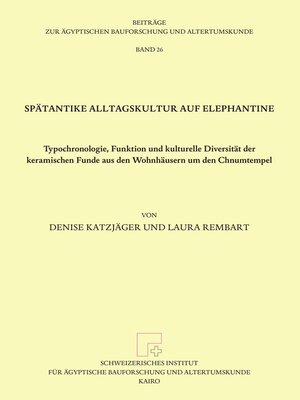Spatantike Alltagskultur auf Elephantine
ebook ∣ Typochronologie, Funktion und kulturelle Diversitat der keramischen Funde aus den Wohnhausern um den Chnumtempel · Beitrage zur agyptischen Bauforschung und Altertumskunde
By Denise Katzjager

Sign up to save your library
With an OverDrive account, you can save your favorite libraries for at-a-glance information about availability. Find out more about OverDrive accounts.
Find this title in Libby, the library reading app by OverDrive.



Search for a digital library with this title
Title found at these libraries:
| Library Name | Distance |
|---|---|
| Loading... |
Elephantine was the southernmost city of the Roman Empire, along with Syene/Aswan. For thousands of years, the island played an important role not only as a border fortress to Nubia, a trading centre and regional capital but also as one of the most important religious cult sites in ancient Egypt. In order to gain an insight into the everyday life of the inhabitants of Elephantine and Syene, the Austrian Archaeological Institute, under the direction of Sabine Ladstatter, initiated the project Housing in Antiquity in Syene/Elephantine, Upper Egypt, which was carried out in cooperation with the Swiss Institute of Architectural and Archaeological Research on Ancient Egypt, Cairo. The present publication is part of this study and deals with the evaluation of ceramic material from three late antique house complexes at Elephantine. The primary aim was to narrow down the sometimes very long time spans of the vessel forms by critical analysis of the specialist literature and research on Elephantine pottery, as well as by contextual evaluation and comparison with other groups of finds. In addition, changes in decoration techniques and the genesis of individual ware groups can be recorded. Of particular interest in the available material is the locally produced fine ware, with supra-regional sales, especially from Late Antiquity onwards. The new fabric system developed in the course of the project, in conjunction with the typology developed in this work, has made it possible to show connections between ware groups, forms and production methods. The pottery finds are used to illustrate aspects of everyday culture in Upper Egypt and the cultural diversity of this region in terms of eating and drinking habits and trade.







